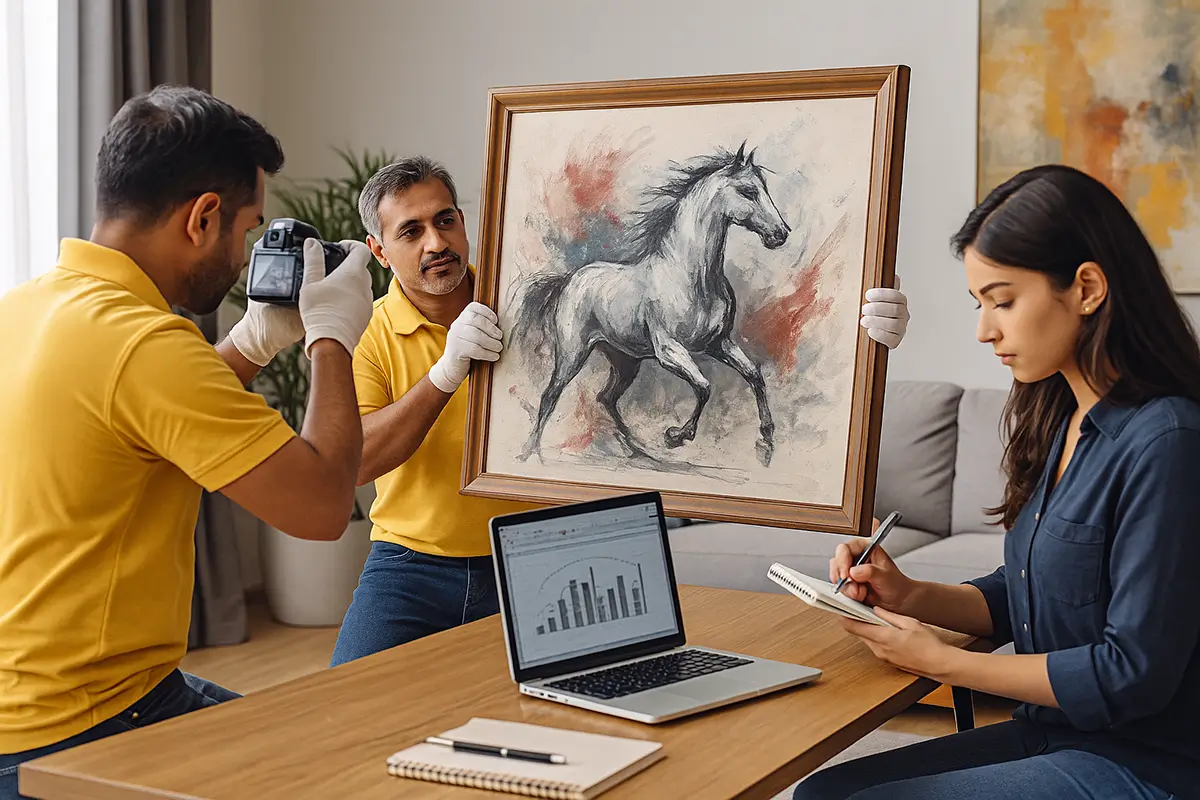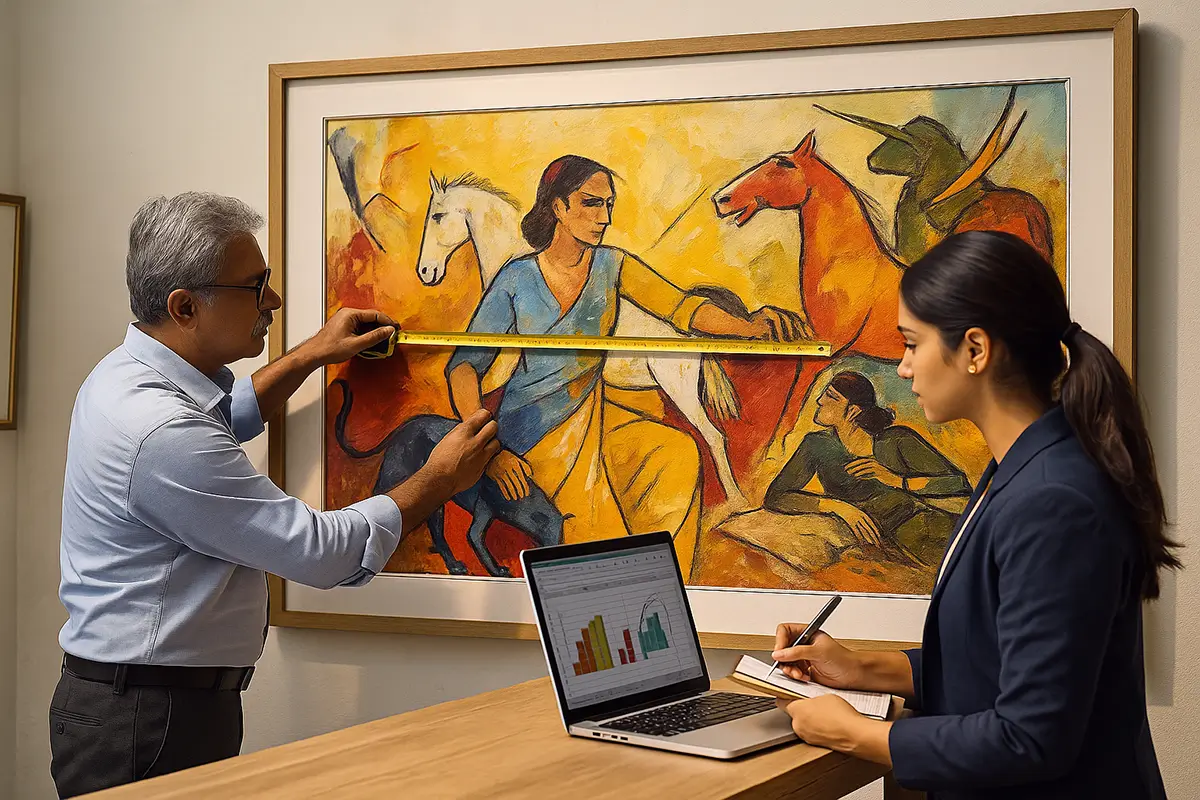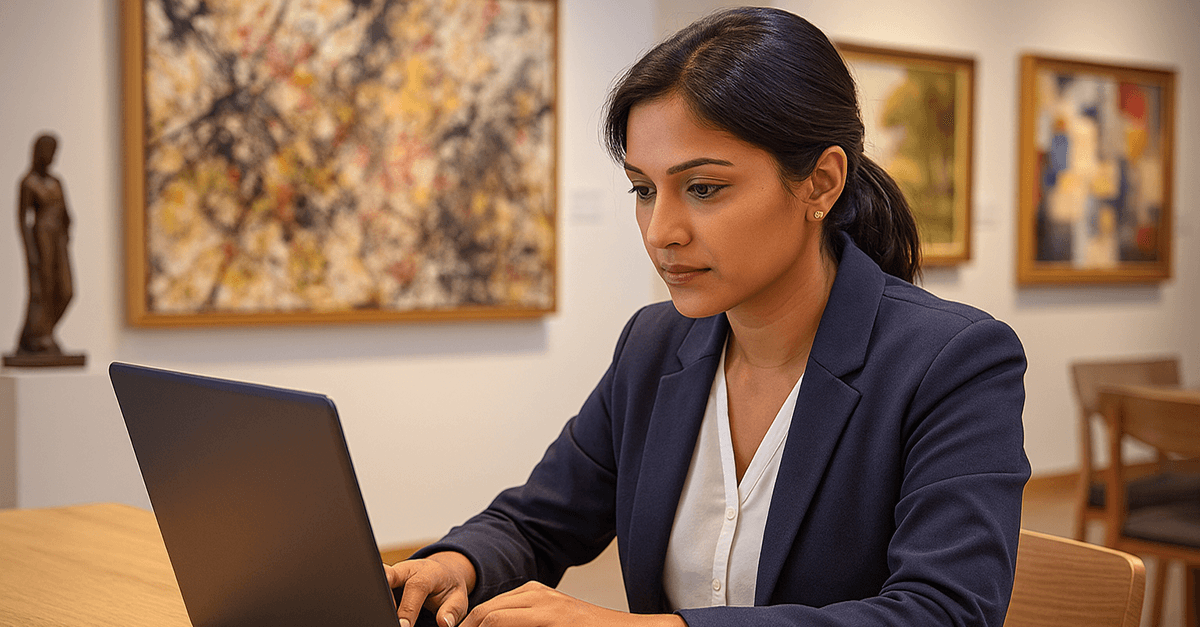Introduction: From passion to portfolio
Traditionally, art collecting in India was driven by passion, prestige, and cultural pride. Paintings were acquired for personal enjoyment, sculptures for homes and temples, textiles for legacy. But over the last two decades, as India’s economy has globalised and wealth has professionalised, art has quietly stepped into the boardroom.
Today, art is no longer seen only as décor or indulgence—it is increasingly treated as an asset class. Corporates schedule artworks on their balance sheets, family offices consider art in portfolio diversification, and estate planners now confront questions of valuation, tax, and inheritance.
This blog explores how art functions as an asset class in India, what makes it unique, how it intersects with financial and estate planning, and how collectors can safeguard both cultural and financial value through structured strategies.
What does it mean for art to be an asset class?
An “asset class” is a category of investment with similar characteristics, behaviour, and role in portfolios. Traditional asset classes include equities, bonds, real estate, and commodities. In recent decades, art and collectibles have increasingly been considered as “alternative assets.”
Distinctive features of art as an asset:
- Tangible & non-fungible: Unlike stocks or bonds, each piece of art is unique.
- Low correlation: Historically, art values don’t move in lockstep with stock markets, offering diversification benefits.
- Illiquidity: Art can take time to sell and values can vary depending on demand cycles.
- Emotional/cultural dividend: Unlike gold or real estate, art offers aesthetic and cultural returns.
For Indian collectors, the dual benefit of cultural prestige + financial potential makes art an increasingly appealing asset class.
Art investment in India: Trends & market dynamics
1. Rising wealth and global interest
HNIs and family offices are allocating to art, both for personal portfolios and as intergenerational legacies. International buyers are also looking at Indian modern and contemporary art, driving global demand.
2. Modern masters as anchors
Works by artists such as M.F. Husain, S.H. Raza, Tyeb Mehta, and F.N. Souza remain highly liquid and continue to set benchmarks at auctions.
3. Contemporary art with momentum
Mid-career and emerging artists with strong gallery and institutional support are attracting new investors.
4. Institutional and corporate collecting
Corporates in sectors like banking, IT, and manufacturing are professionalising art collecting as part of brand building and asset diversification.
5. Transparency and regulation challenges
The Indian market still has opacity in pricing, provenance gaps, and legal hurdles around antiquities. These add risk factors investors must consider.
Why art deserves a place in financial planning
Diversification benefits
Art provides low correlation with traditional financial markets. During stock market volatility, high-quality art has historically preserved value.
Inflation hedge
Like gold and real estate, art can act as a store of value in inflationary times.
Long-term appreciation
Well-chosen works—especially with strong provenance—tend to appreciate steadily over decades.
Collateral potential
Artworks can be used as collateral for loans, though this is still nascent in India.
Emotional ROI
Beyond financial metrics, art enriches homes, offices, and communities with cultural capital.
Estate planning with art: Why it’s critical in India
Unlike liquid assets, art is non-fungible. This makes estate planning particularly challenging but also essential.
Challenges without planning:
- Disputes among heirs: Multiple heirs may claim works of uncertain value.
- Undervaluation: Without professional appraisals, works may be under-declared for tax or division.
- Liquidity mismatch: Large art collections may be difficult to monetise quickly for inheritance settlements.
- Cultural loss: Works may be sold hastily without considering long-term legacy.
Estate planning solutions:
- Professional valuations: Establish fair market values for division or taxation.
- Trust structures: Families can place collections in trusts to manage ownership.
- Bequests and wills: Clearly state intended distribution of art among heirs.
- Donations to institutions: Works can be donated for cultural legacy, with potential tax benefits.
- Digitisation & cataloging: Ensure every work is documented with provenance, condition, and valuation.
For Indian families, where art is often inherited across generations, structured estate planning avoids conflict and preserves cultural heritage.
Tax and regulatory considerations in India
While tax rules for art are evolving, certain principles apply:
- Capital gains tax: Profits from the sale of art are taxable as capital gains.
- GST: Applies to the purchase and import of artworks (currently 5%).
- Wealth declaration: High-value art may need to be disclosed for compliance.
- Antiquities regulation: The Antiquities and Art Treasures Act (1972) regulates trade in cultural property over 100 years old.
Collectors should work with tax advisors to align art planning with broader financial strategies.
The role of valuation in treating art as an asset
Valuation is the linchpin connecting art with financial and estate planning.
Functions of valuation:
- Balance-sheet scheduling: Assign credible values for corporate and family office records.
- Insurance coverage: Establish replacement values for risk protection.
- Estate division: Provide fair market values for equitable distribution among heirs.
- Loan collateralisation: Support banks and NBFCs in assessing secured lending.
- Market entry/exit: Inform buying and selling decisions with comparables.
Without valuation, art remains an unquantified asset—leaving families and corporates exposed.
Case studies (anonymised)
Case 1: Family office in Mumbai
Inherited a large collection of modern Indian paintings. By commissioning professional valuations and placing the collection in a family trust, they ensured both tax compliance and harmonious division among heirs.
Case 2: Corporate in Bengaluru
Insured its 300+ artwork collection with updated valuations, integrating art into its corporate balance sheet. This not only improved financial reporting but also enhanced brand positioning.
Case 3: Private collector in Delhi
Leveraged valuations to donate a portion of their collection to a museum, gaining cultural recognition and estate planning efficiency.
Best practices for collectors considering art as an asset
- Document everything: Provenance, condition reports, and invoices are essential.
- Revalue regularly: Every 18–24 months to reflect market changes.
- Integrate with financial advisors: Align art strategies with overall wealth management.
- Plan estates early: Don’t leave division of art collections to chance.
- Balance cultural and financial goals: Consider both legacy and liquidity.
Future outlook: Art in Indian wealth management
As India’s wealth base grows, art is increasingly being recognised alongside equities, real estate, and private equity as part of diversified portfolios. Developments to watch include:
- Dedicated art funds and family office allocations.
- Growth of art-secured lending.
- Greater institutionalisation of provenance and valuation standards.
- Integration of AI and blockchain for secure provenance verification and market analytics.
Art is moving from the periphery to the mainstream of wealth management in India.
Conclusion: Art as culture, capital, and continuity
Art is unique in that it delivers three returns simultaneously:
- Cultural enrichment for families, workplaces, and communities.
- Financial appreciation as part of diversified portfolios.
- Legacy continuity when integrated into estate planning.
Treating art as an asset class requires discipline—valuation, documentation, and professional planning. Done right, it ensures that artworks not only beautify spaces but also strengthen balance sheets and preserve family legacies.Learn more about our specialised Art Valuation Services. At TurmericEarth, we integrate financial perspectives with cultural stewardship, helping collectors and institutions treat art as both a cultural treasure and a financial asset.













